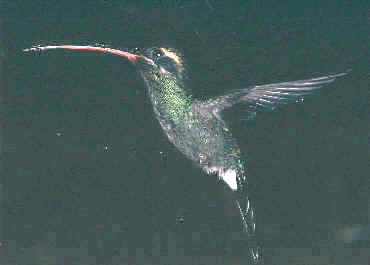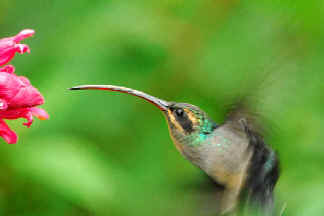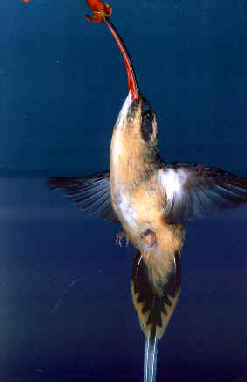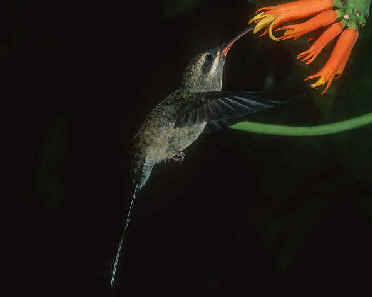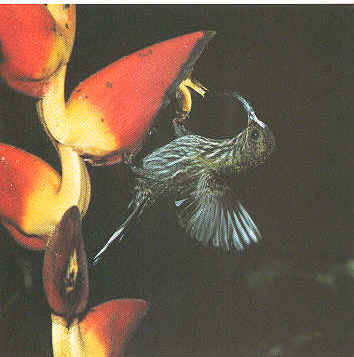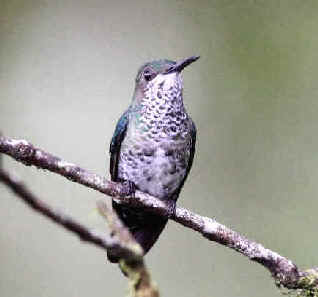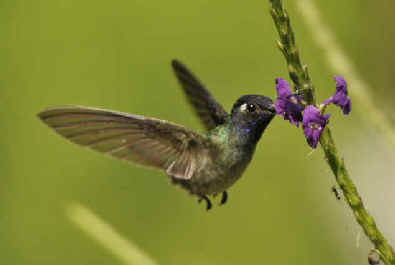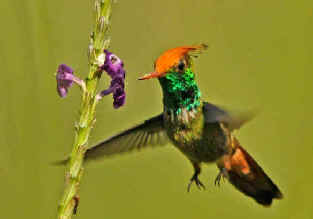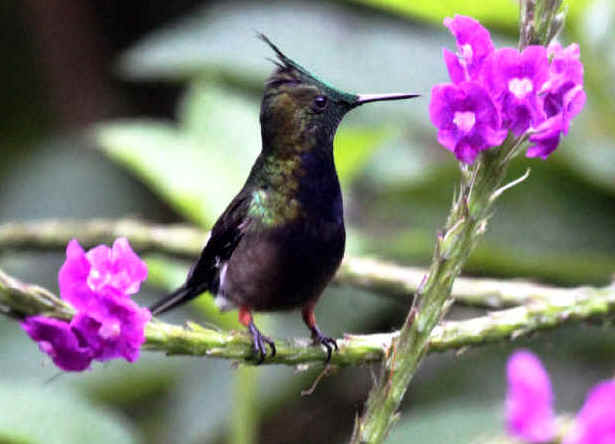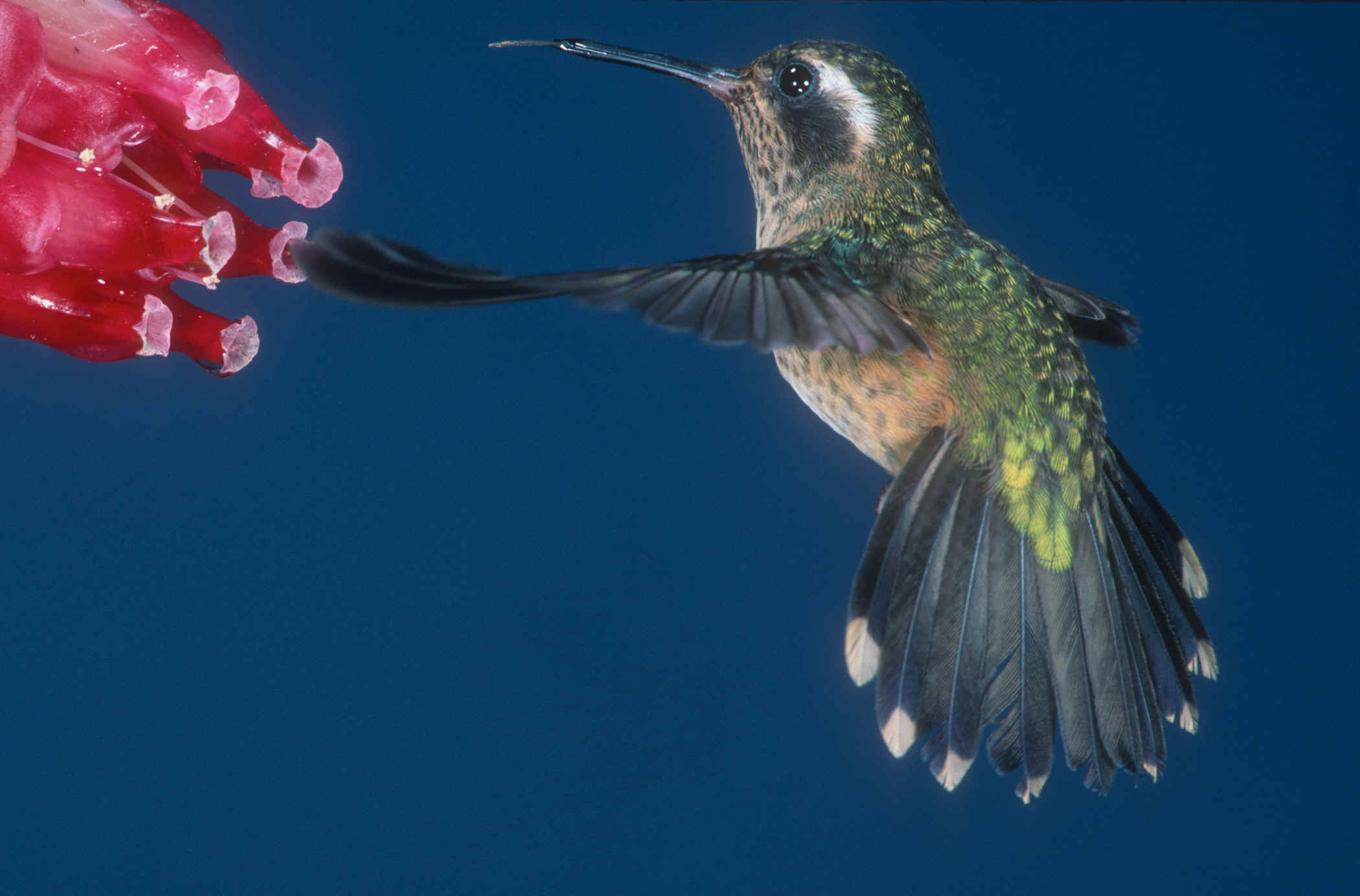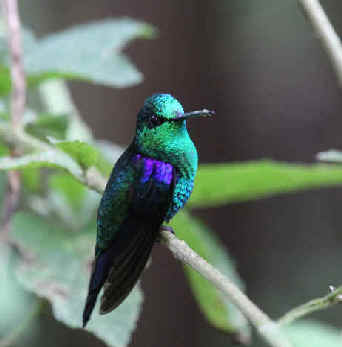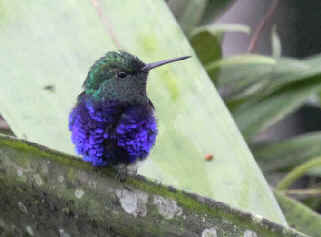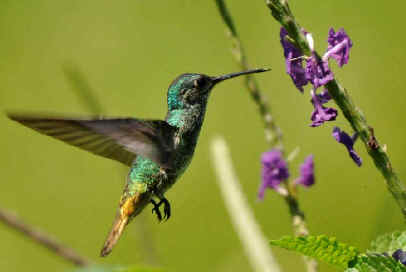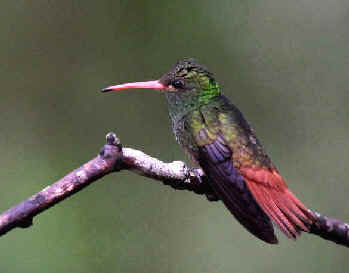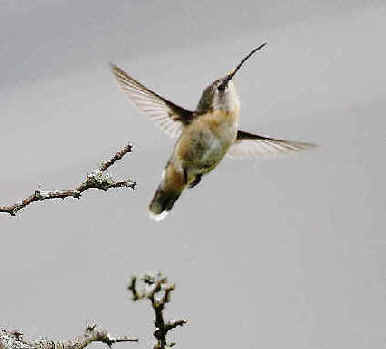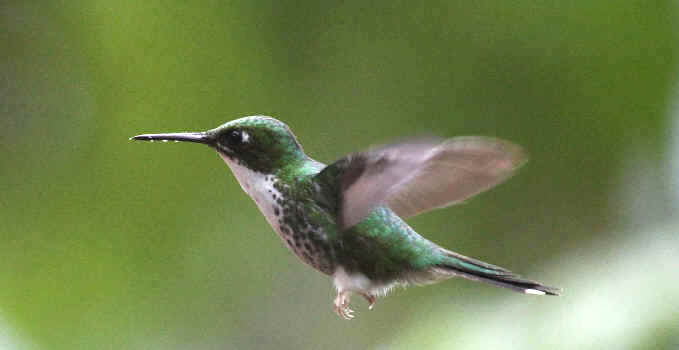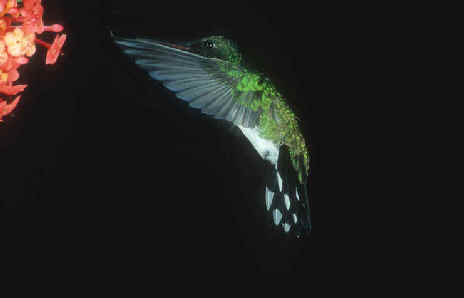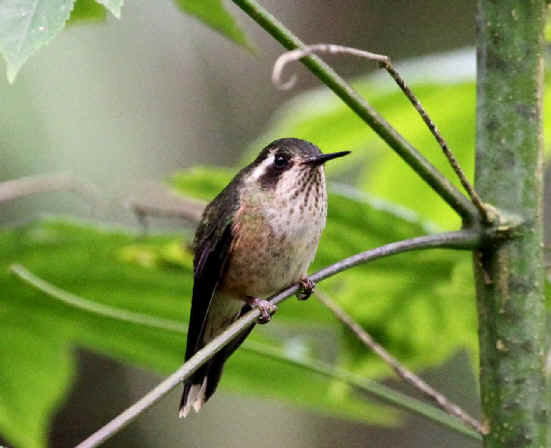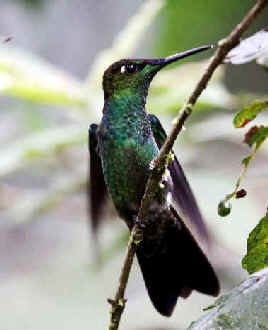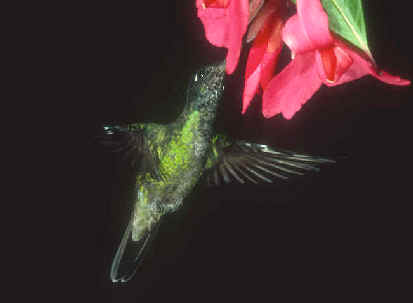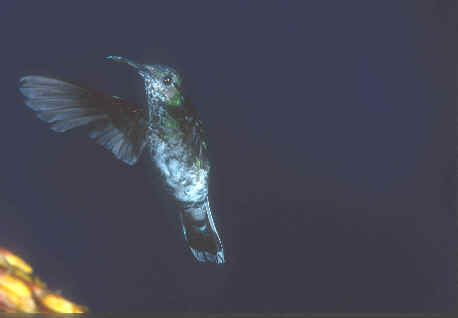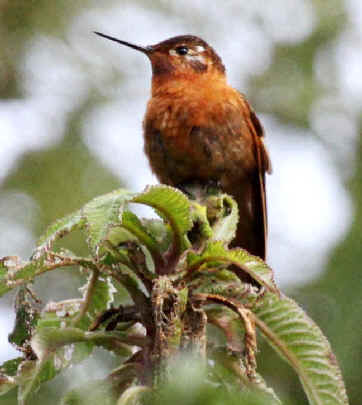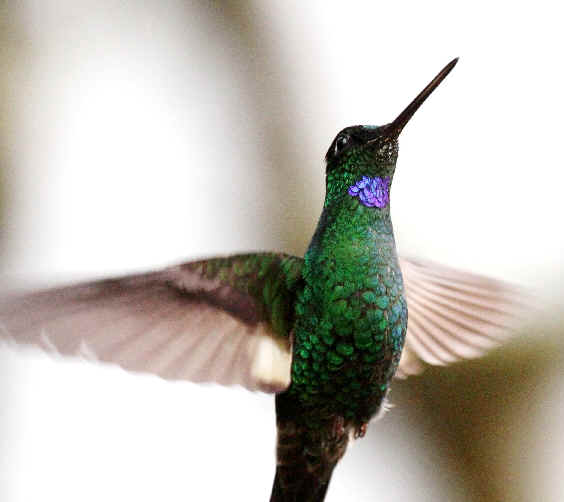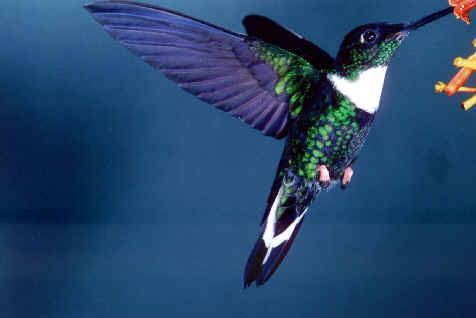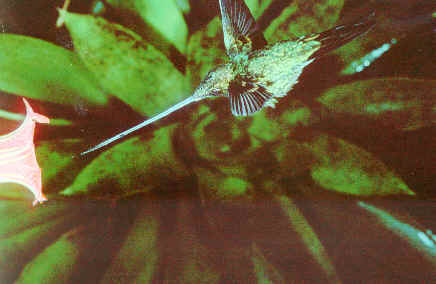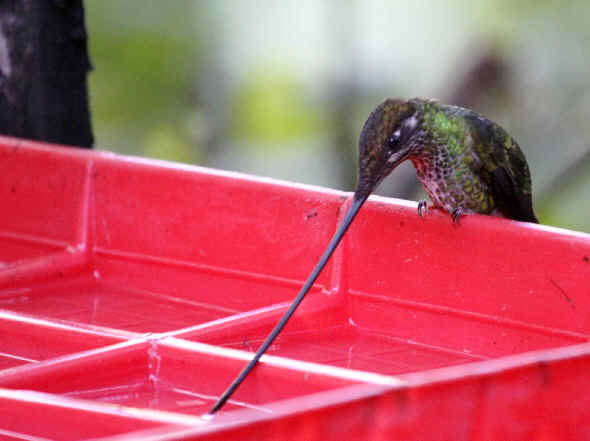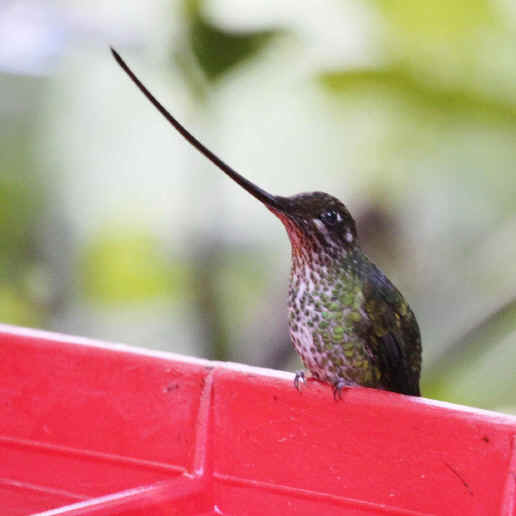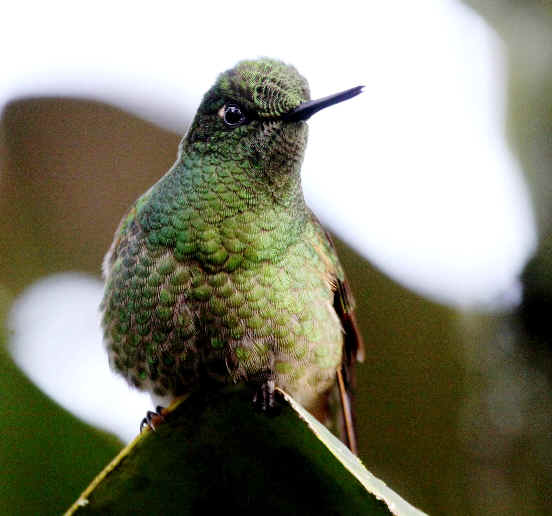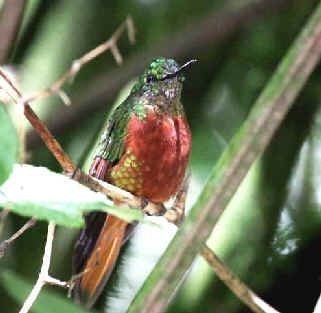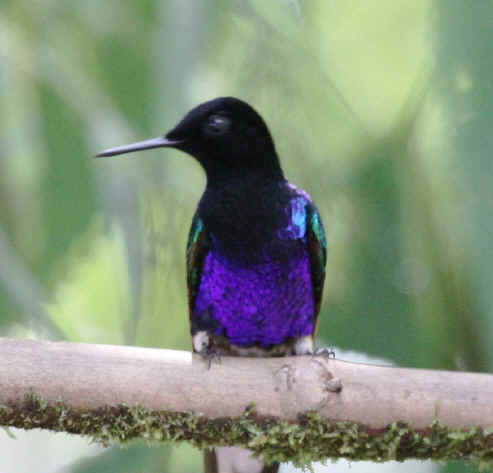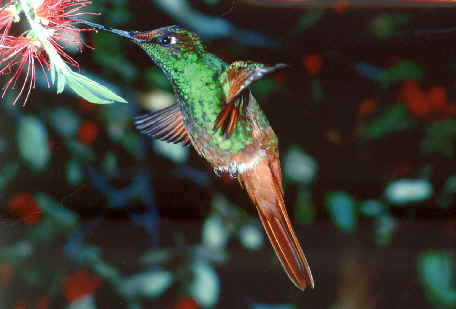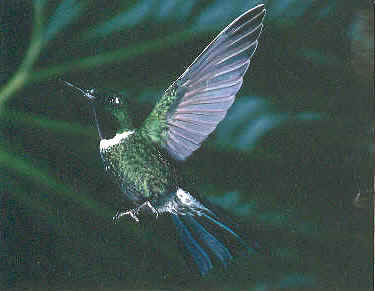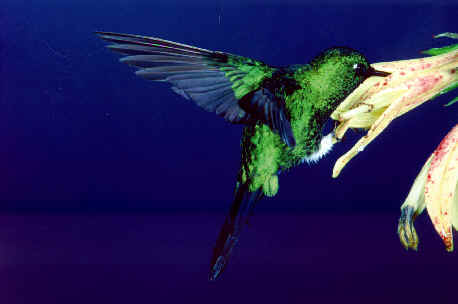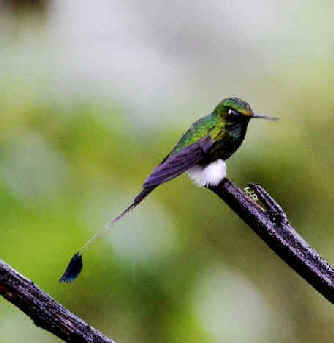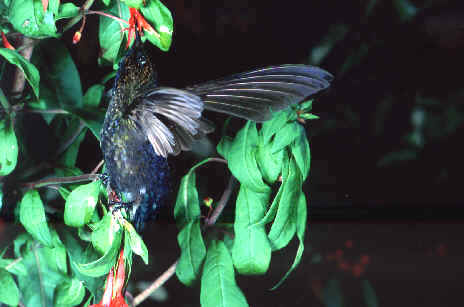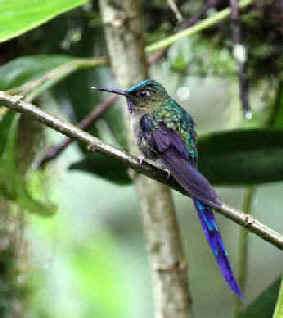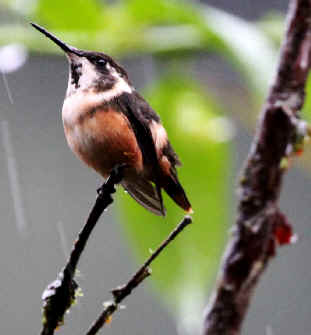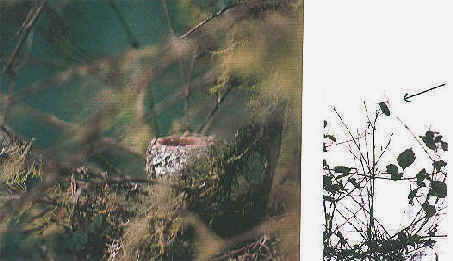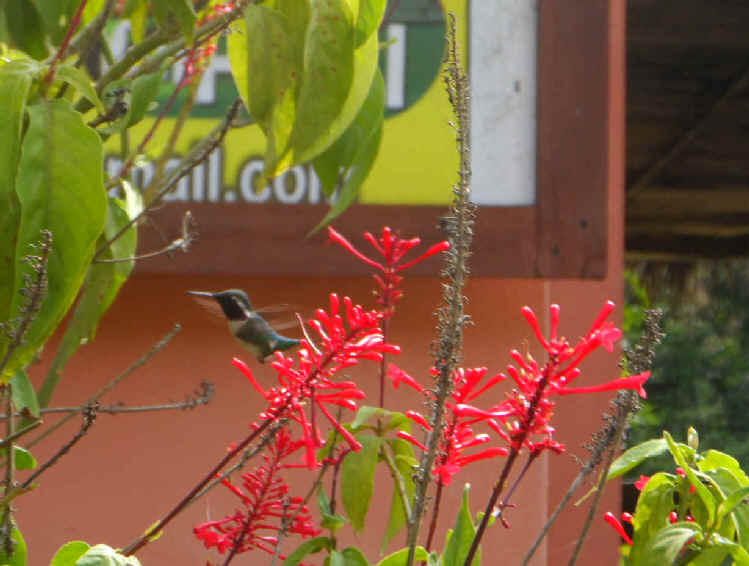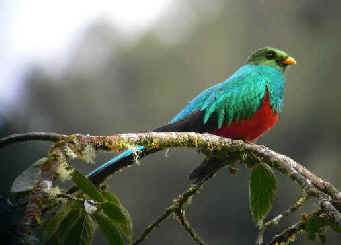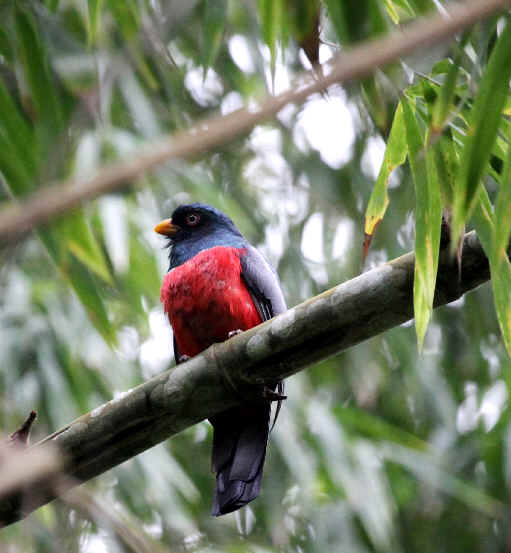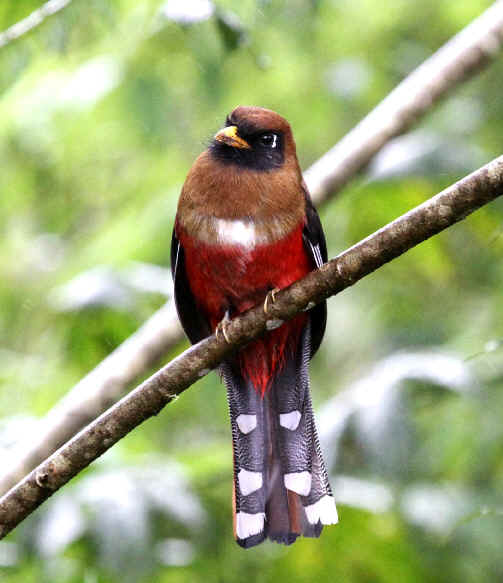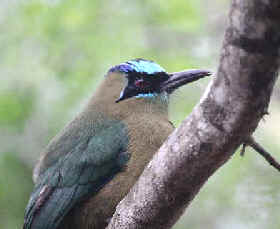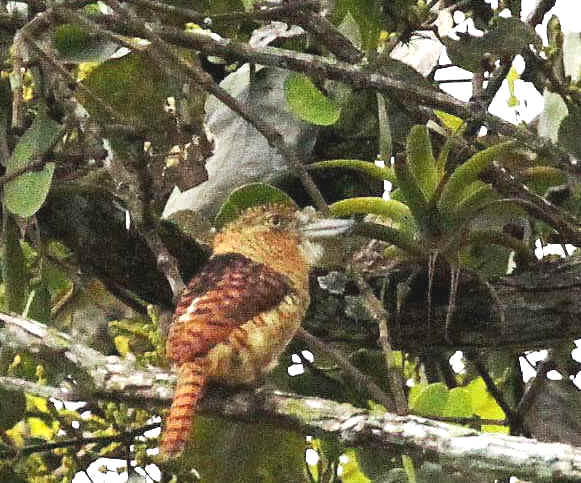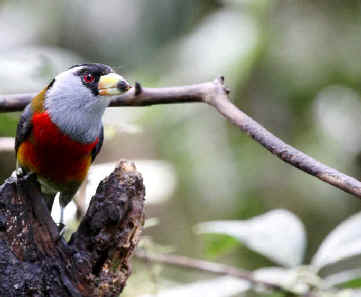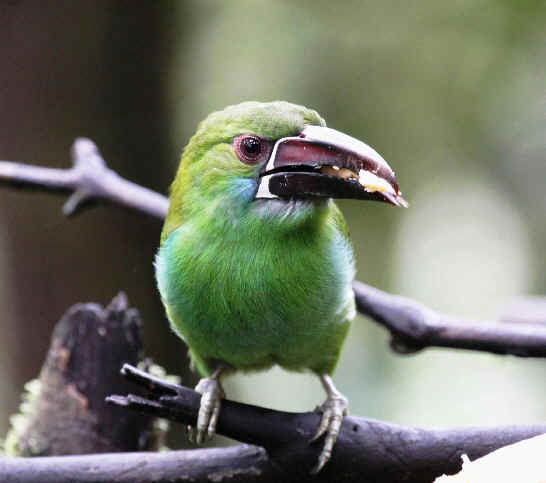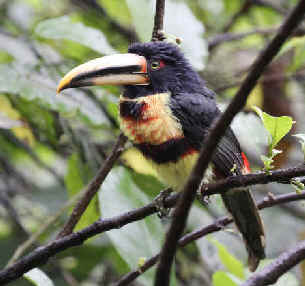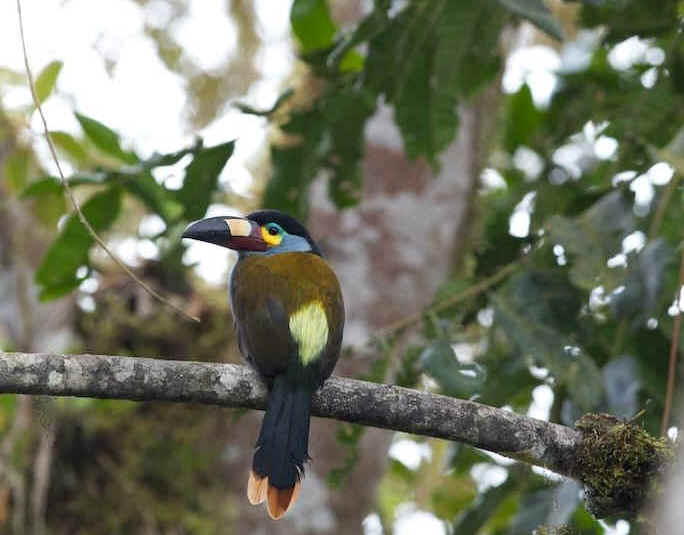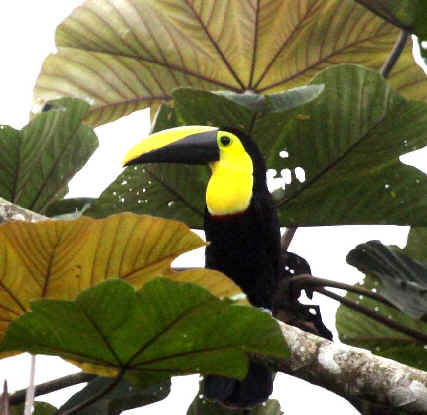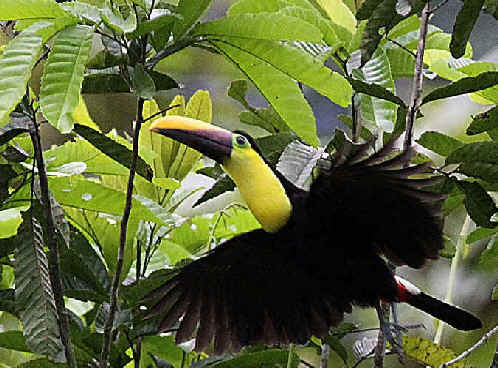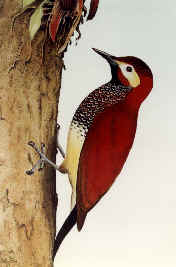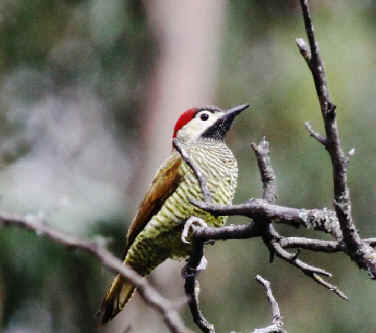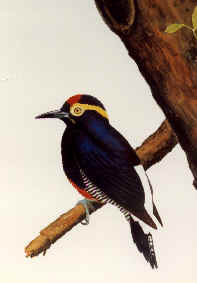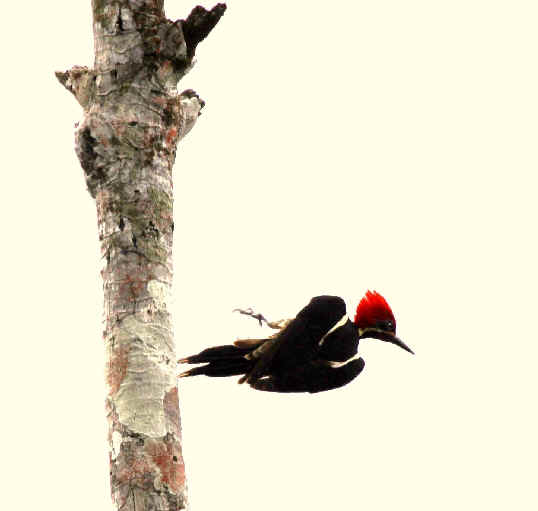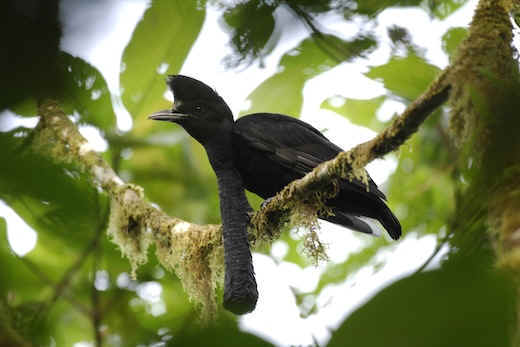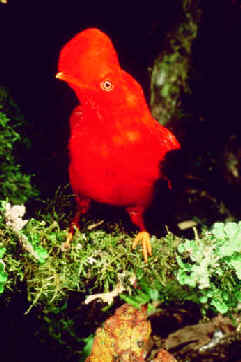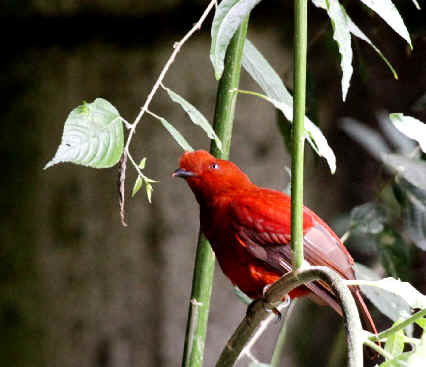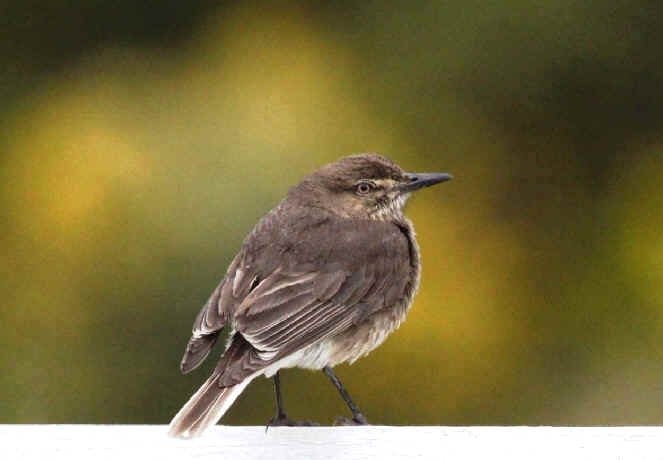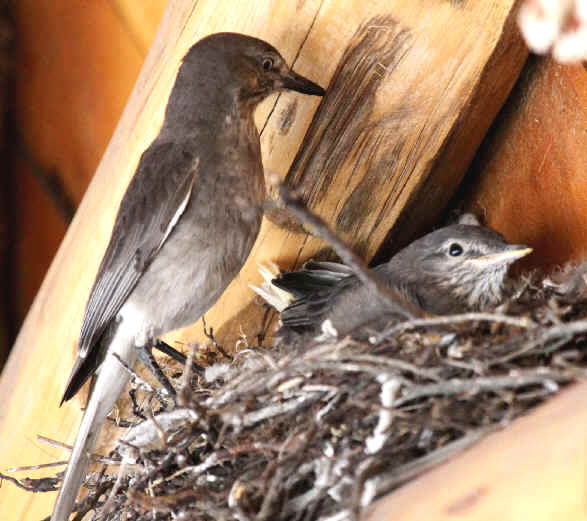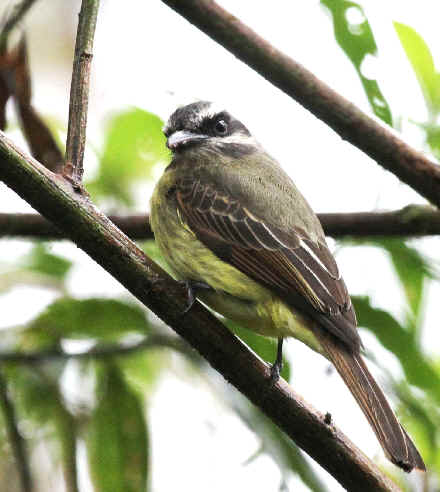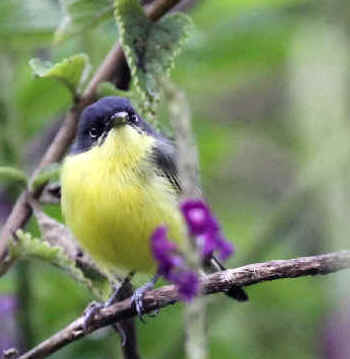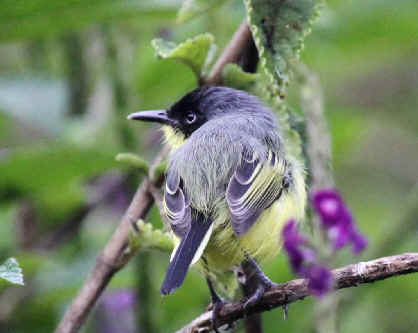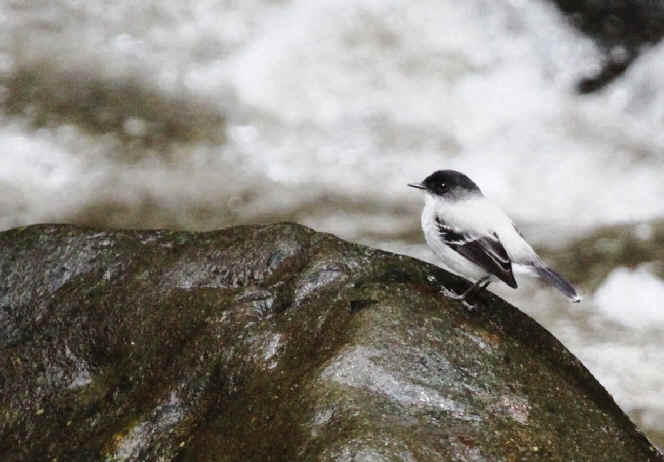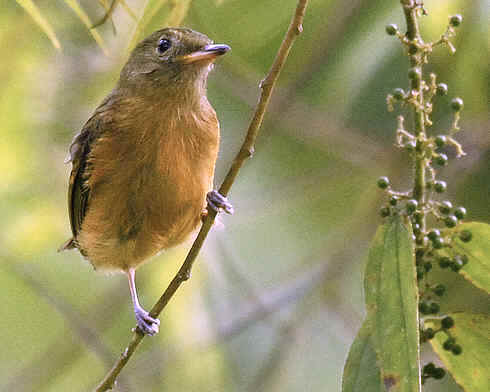
E-mail: font@focusonnature.com
Phone: Toll-free in USA 1-888-721-3555
or 302/529-1876
 |
PO Box 9021,
Wilmington, DE 19809, USA E-mail: font@focusonnature.com Phone: Toll-free in USA 1-888-721-3555 or 302/529-1876 |
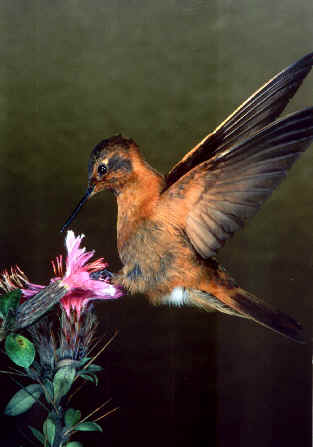 ECUADOR
BIRDS
ECUADOR
BIRDS
during Focus On Nature Tours
including tours in the
GALAPAGOS ISLANDS
Hummingbirds to
Flycatchers
Noting those found during
Focus On Nature Tours
with an (*)
1991 thru 2015
during the months of February, April,
May, July, and August
Part 2 of a List of Ecuador Birds
compiled by Armas Hill,
with some photos
There have been 21 FONT birding tours in Ecuador,
during which
over 1,100 species of birds have cumulatively been seen.
Presently 1,637 species of birds are in this 4-part list.
Photo at upper right: An Ecuadorian hummingbird called the
SHINING SUNBEAM
(photo by Larry O' Meallie)
Links to Groupings
of Birds in this List:
Hummingbirds Trogons Kingfishers Motmots Jacamars Puffbirds
Barbets Toucans
Woodpeckers Manakins
Cotingas & Becards Flycatchers
Links to Other Parts
of this Ecuador Bird List:
Part
1: Tinamous to Swifts Part
3: Antshrikes to Woodcreepers Part 4: Vireos
to Grosbeaks
Codes:
Indicating regions visited (as
follows):
E: East of the
Andes
az: Amazonian Ecuador (including the areas of La Selva & Sacha Lodges
along the Rio Napo)
po: Podocarpus National Park
(including the Rio Bombuscara area, near Zamora)
si: the area of "San
Isidro" near Cosanga, on the east Andean slope
W: FOUND WEST OF THE HIGH
ANDES
nm: the areas of Nono Mindo
Road and/or Mindo
po: Podocarpus National Park
(including near Loja)
H: FOUND IN THE HIGH ANDES (mostly or always).
cu: Cuenca, west into the
mountains to El Cajas
po: Podocarpus National Park
(including the Cajanuma area)
G: SEEN IN THE GALAPAGOS ISLANDS
Specific Locations:
BR: Buenaventura
Reserve (Umbrellabird Lodge)
CN: Canande Reserve (Canande Lodge)
CP: Copalinga cabins & restaurant, near Zamora in southeast Ecuador
JR: Jorupe Reserve (Urraca Lodge)
TR: Tapichalaca Reserve (Casa Simpson)
UR: Utuana Reserve
YR: Yanacocha Reserve
These location codes are
followed by:
c: common fc: fairly common u:
uncommon r: rare vr: very
rare
Codes:
h: heard only
(i): introduced
(t) a globally threatened or
rare species, designated by Birdlife International
(t1): critical (t2): endangered (t3): vulnerable
(nt): a near-threatened species
globally
(Ee): endemic to Ecuador
(Ge): endemic to the Galapagos
(Er): rare in Ecuador
(ph): species with a photo in the FONT website
A primary source for this list is the "The Birds of Ecuador - Status, Distribution, and
Taxonomy"
by Robert S. Ridgely and Paul J. Greenfield, published in 2001.
More than 2,100 birds
that have been found during FONT South America Birding Tours in Argentina,
Brazil, Chile, Ecuador, & Venezuela.
Additional Links:
Birds of the Amazonian Region Rare Birds of the Andes & Patagonia
A Complete List, in 2 parts, of all of the Hummingbirds, with some Photos
Mammals of South America (with some photos) Butterflies of South America (with some photos)
Upcoming
FONT Birding & Nature Tours in South America:
in
Brazil, Ecuador, Venezuela
in Argentina, Chile
A Chronological List of all scheduled FONT birding & nature tours
Directory of Photos in this Web-site
Bird-List:
Hummingbirds
